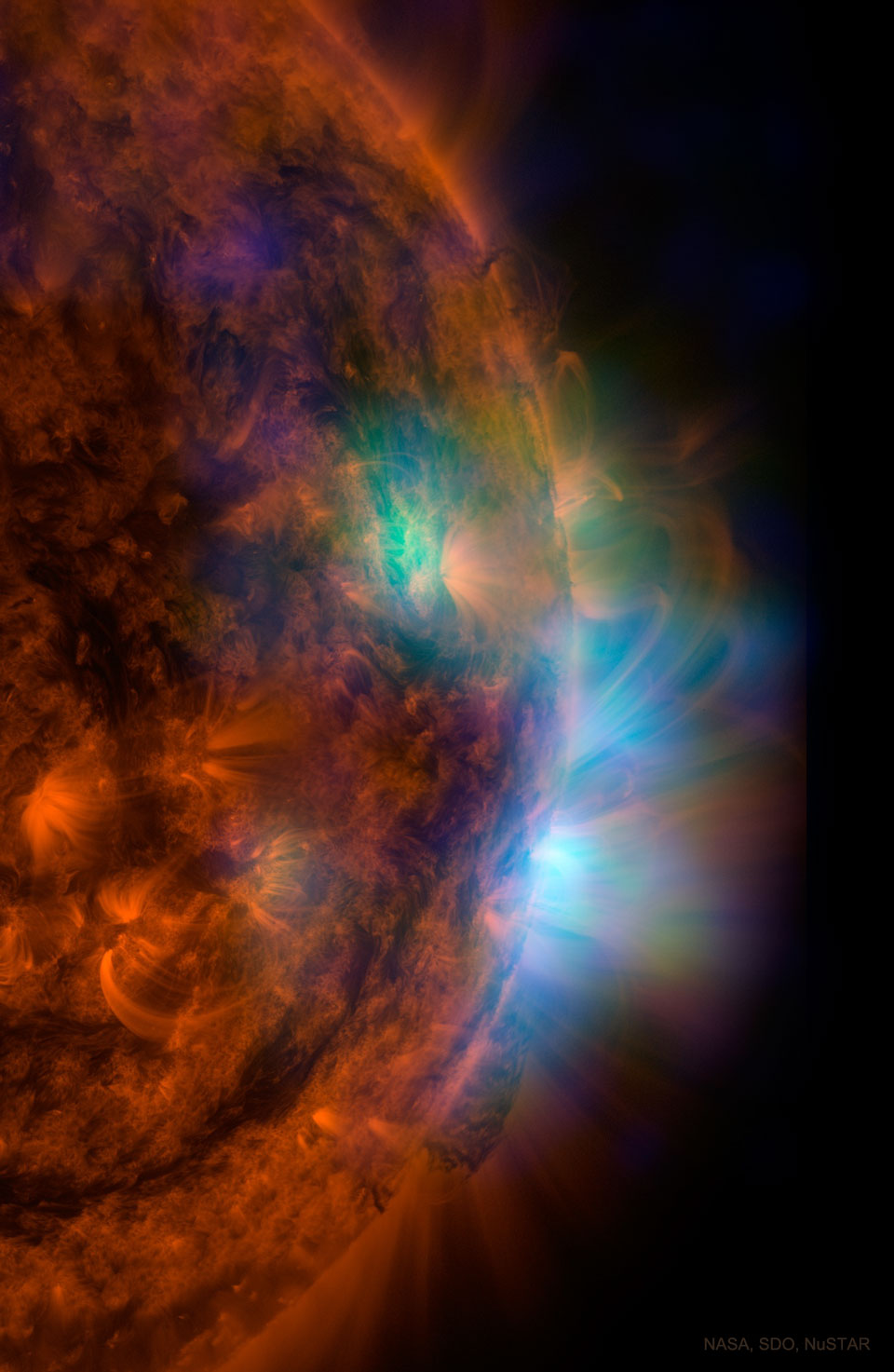来自核星的x射线中的太阳
(原标题: The Sun in X-rays from NuSTAR)
2021-11-23
浏览次数: 152
为什么太阳黑子上方的区域如此热?太阳黑子本身比周围的太阳表面要冷一点,因为产生它们的磁场减少了对流加热。因此不寻常的是,头顶上的区域——甚至在太阳日冕的更高地方——可以比现在热上百倍。为了帮助找到原因,美国宇航局指示地球轨道核光谱望远镜阵列(NuSTAR)卫星将其非常敏感的x射线望远镜指向太阳。这里的特色是太阳在紫外光下,显示为红色色调,由轨道太阳动力学天文台(SDO)拍摄。假绿色和蓝色是由核星在不同波段的高能x射线中探测到的太阳黑子上方的辐射,突出显示了极高温度的区域。太阳大气加热机制的线索来自于这样的核星图像,并揭示了太阳纳米耀斑和微耀斑作为短暂的能量爆发,可能会导致不寻常的加热。
查看原文解释
Why are the regions above sunspots so hot? Sunspots themselves are a bit cooler than the surrounding solar surface because the magnetic fields that create them reduce convective heating. It is therefore unusual that regions overhead -- even much higher up in the Sun's corona -- can be hundreds of times hotter. To help find the cause, NASA directed the Earth-orbiting Nuclear Spectroscopic Telescope Array (NuSTAR) satellite to point its very sensitive X-ray telescope at the Sun. Featured here is the Sun in ultraviolet light, shown in a red hue as taken by the orbiting Solar Dynamics Observatory (SDO). Superimposed in false-colored green and blue is emission above sunspots detected by NuSTAR in different bands of high-energy X-rays, highlighting regions of extremely high temperature. Clues about the Sun's atmospheric heating mechanisms come from NuSTAR images like this and shed light on solar nanoflares and microflares as brief bursts of energy that may drive the unusual heating.
